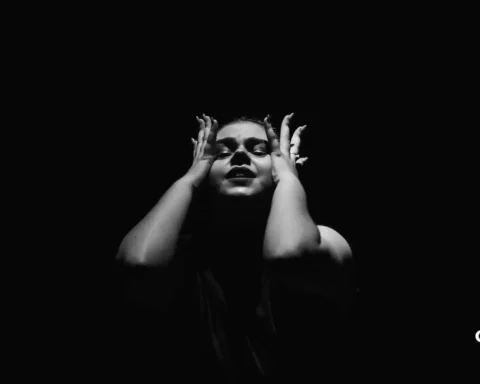Welcome to a captivating exploration of “Indian Business Culture,” where traditions and commerce converge in a tapestry rich with nuances and opportunities. Journey into the heart of India’s corporate landscape, unravelling the intricate threads that define its unique blend of practices, values, and etiquette.
Discover the intricacies of Indian business culture – a fusion of tradition and commerce. Explore practices, values, and etiquettes that shape interactions in India’s corporate world. Join us to unravel the keys to successful engagement in this dynamic landscape.
Table of Contents
Greetings and Interactions
Indian society stands as a vibrant tapestry of diverse ethnicities and cultures, making it a unique and dynamic society. As you engage with its people, mastering the art of appropriate introductions and greetings is vital. Embracing a flexible approach will serve you well in this richly varied environment.
In the realm of Indian business etiquette, certain customs and practices come to the forefront. While a firm handshake is generally considered an acceptable gesture, it’s worth noting the prevalence of the “namaste.” This traditional greeting is a reflection of humility and respect and helps in creating business relationships.
Should you find yourself in a context where a namaste is appropriate, there’s no need for alarm. A slight bow, accompanied by pressing your palms together with fingers pointed upwards, will convey your acknowledgement. In gatherings with several individuals, extending your greetings to the eldest person present is considered thoughtful.
A cornerstone of Indian business culture is the ceremonial exchange of business cards. When presented with a business card, a gesture of esteem can be conveyed through your careful reception. Take a moment to receive the card, your focus solely on it, reflecting your genuine interest. This attentiveness speaks volumes about your respect for the individual. Once the interaction concludes, tuck the card away securely, symbolising your fostered connection.
Business Meetings
In Indian business culture, the art of small talk is not just a formality; it’s a powerful tool for building rapport and establishing meaningful connections. Engaging in casual conversation is not only common but highly encouraged before a meeting. Indians often take a genuine interest in your family or background, viewing it as a means to truly understand you personally. This approach fosters a more holistic and authentic connection, transcending the confines of formal business exchanges.
As you embark on small talk, delve into topics beyond business. Share anecdotes about your journey to the meeting, comment on the prevailing weather, or discuss any recent occurrences that may have caught your attention. By embracing these seemingly trivial conversations, you contribute to the cultural fabric that weaves relationships together.
An exciting facet of Indian business culture is the slight flexibility in meeting start times. Due to the value placed on genuine human interaction, it’s not uncommon for meetings to commence a few minutes later than initially scheduled. This delay arises from the sincere desire to engage in meaningful conversation and foster connections before diving into the agenda. Therefore, patience and an open attitude towards time are virtues to uphold.
Within a business setting and meeting, the decision-making process is crucial to comprehend. While you may be accustomed to swift conclusions, Indian business meetings might take a different course. It’s not unusual to encounter responses like “maybe” or “I’m not sure” when presenting ideas. This approach stems from a cultural inclination to avoid outright refusals, which could be perceived as argumentative or impolite.
To navigate this landscape effectively, consider reframing your questions to be open-ended. Doing so creates an environment where a direct “no” is not the only feasible response. This subtle yet meaningful adjustment allows for a more nuanced exchange of ideas and opinions. Understanding and respecting this cultural nuance is essential, particularly for those venturing into business endeavours within India.
The Art of Conversation
English and Hindi emerged as the official languages in the mosaic of India’s linguistic landscape. While English prevails in spheres of business, politics, and education, the rich tapestry of the Hindi language and culture is woven into the very fabric of daily life.
When initiating conversations, cultivating familiarity with specific topics can serve as a bridge to deeper connections. Engaging in discussions about politics, the ever-popular realm of cricket, the enchanting world of films, and the contemporary arena of Indian Economic Reforms can unlock doors to rapport-building. Delving into these subjects showcases your genuine interest, fostering a positive relationship and facilitating acceptance within the community.
A cornerstone of Indian identity lies in its ancient and illustrious civilization, a source of immense pride and enthusiasm for most Indians. Embracing this sentiment and inviting conversations about India’s rich heritage can create a meaningful and engaging dialogue.
While India exudes tolerance, avoiding religious discussions and respecting the diverse tapestry of beliefs is prudent. Similarly, avoiding the sensitive topics of poverty and relations with Pakistan ensures that your interactions remain respectful and harmonious.
In verbal communication, a cultural nuance emerges—Indians often shy away from using the word “no,” perceiving it as negative. Instead, phrases like “maybe” or statements tailored to appease may be employed. An intriguing facet of nonverbal communication is the subtle head movement, akin to a gentle blend of nod and shake, indicating a nuanced “no.”
Nonverbal cues extend to eye contact, where cultural norms vary. Sustained eye contact, especially between a woman and a man, is not customary, acknowledging the intricacies of interpersonal dynamics.
While an expression of connection in many cultures, touch holds different implications in India. It’s generally avoided as a form of communication, aligning with local customs.
The physical distance maintained during interactions, approximately three feet apart, reflects a sense of personal space revered in Indian culture.
The posture one assumes communicates volumes. Standing with hands on hips can inadvertently convey anger or aggression, a subtle reminder of the importance of body language.
In this rich cultural tapestry, feet carry symbolic significance. Pointing one’s feet at another person is considered disrespectful, as feet are deemed unclean.
Lastly, a profound gesture of respect involves refraining from touching someone’s head, even if it’s an affectionate pat on a child. The head is revered as the seat of the soul, making this gesture a mark of deep reverence and cultural understanding.
The Role of Hierarchy
An inherent appreciation for this hierarchical structure is essential and paramount when engaging in business practices within this diverse and dynamic market. To navigate successfully, one must identify decision-makers and balance organisational processes and informed decision-making.
Central to this understanding is the recognition that the pathway to progress is paved with a clear acknowledgement of authority. Embarking on a business development journey demands a precise knowledge of the pivotal figure responsible for decision-making within the organisation. This key individual must be recognised and appropriately engaged to ensure that your efforts are channelled effectively and decisions are executed seamlessly.
While honouring established processes within the organisation, it is equally crucial to ensure that the decision-maker is not merely kept informed but is an integral part of the strategic orchestration. This synergy between protocol and proactive engagement ensures that your initiatives align harmoniously with the organisation’s overarching goals. This delicate equilibrium contributes to a collaborative environment where ideas are nurtured and transformational decisions are made.
In India’s business landscape, a patriarchal framework often underpins the organisational structure of many family-run businesses. Power and authority emanate from the upper echelon and senior person, encompassing not only top-tier leadership but permeating through middle and junior management tiers as well. Understanding this intricate web of hierarchy is vital, as it shapes the dynamics of authority and influence at every level.
Beyond the professional realm, this culture of dependence resonates in the interactions between superiors and subordinates. A deep-seated expectation exists wherein a boss anticipates a certain degree of reliance from their subordinates. This symbiotic relationship hinges on trust, respect, and a nuanced understanding of the hierarchical structure.
Gifts in Indian Business Culture
Unlike some cultures, where gifts are exchanged liberally in initial meetings, India treads a different path. It is uncommon to present gifts during the first business encounter, with exchanging tokens of appreciation becoming a part of the relationship’s evolution.
Within the realm of established relationships, the gesture of gift-giving holds more profound significance. As bonds flourish, a thoughtful exchange of gifts becomes a mark of camaraderie and mutual regard. When you find yourself at the receiving end of a gift, remember that reciprocation is not just polite but a gesture of honouring the connection.
Navigating gift-giving norms, particularly in a professional setting, comes with understanding certain guidelines. The Indian corporate landscape is often mindful of ethical considerations, with organizations and government entities advising against accepting gifts to sidestep potential legal implications. Thus, it is prudent to exercise discretion, ensuring that the gift neither raises suspicions of bribery due to its extravagance nor belittles the relationship with its minimalism.
Stepping into social gatherings and functions, a well-chosen gift can be a delightful expression of your appreciation. Whether it’s a fragrant bouquet, elegant perfumes, delectable sweets, or tasteful jewellery, these tokens reflect your thoughtfulness and contribute to the celebratory spirit.
Presenting a gift requires a certain finesse, extending to the very act of offering. The gesture is best executed with both hands or the right hand, while the left hand is consciously avoided as it carries connotations of impurity.
A unique cultural quirk comes into play for those considering monetary gifts—an odd number is favoured. Opt for sums like 21 or 51 Rupees rather than conventional figures like 20 or 50. This distinctive preference aligns with cultural beliefs and carries subtle auspiciousness.
Sensitivity to religious, traditional values and sentiments of Indian culture further underscores the nuances of gift-giving. Items made from leather, for instance, are best avoided, as they could inadvertently infringe upon the sacred status of cows in Hinduism.
Business Dress Code
From the intricate folds of a sari to the tailored lines of a formal shirt and trousers, attire varies dramatically across regions. Modern sensibilities have ushered in a wave of wrapped, graceful, and contemporary ensembles that resonate with the ever-evolving spirit of the nation.
In the sphere of business, attire speaks volumes, conveying professionalism and aligning with the ethos of Indian business etiquette. The classic ensemble of a formal shirt, suit, tie, and trousers is a familiar sight for men. The corporate world often embraces uniforms, meticulously curated to mirror the company’s identity and project a corporate image. This sartorial choice extends beyond personal style, embodying the ethos of the organization.
In sync with the pulse of progress, emerging startups are redefining the dress code landscape. The embrace of smart, comfortable attire fosters ease and imparts a sense of expertise and professionalism to the company’s identity. A seamless blend of comfort and sophistication is the hallmark of this contemporary approach.
For women, a balance is struck between tradition and formality. Formal yet modest attire is widely accepted across the nation. This harmonious blend speaks to the cultural fabric that unites the diverse regions of India.
While attire embodies diversity, certain boundaries delineate professionalism. Pristine presentation is pivotal—garments should be immaculate and free from stains or wrinkles, as first impressions are pivotal in the realm of business.
Hierarchy finds expression even in attire, with employees opting for formal clothing while senior managers elevate the ensemble to a distinguished suit. The world of high-ranking executives often shimmers with branded, designer suits and tuxedos, signifying their esteemed status.
Conclusion
Indian business culture, a captivating blend of tradition and modernity, weaves a narrative of respect, diversity, and professionalism. From the nuances of communication and hierarchy to the art of gift-giving and attire, every facet carries the weight of heritage while embracing the winds of change. Navigating this landscape demands a delicate understanding of cultural nuances, fostering connections rooted in mutual appreciation and an unwavering commitment to bridging gaps. As businesses continue to thrive in this dynamic nation, the embodiment of these values opens doors to opportunities and paves the way for enduring partnerships built on respect, collaboration, and a profound appreciation.
FAQs
What is Indian business culture?
Indian business culture is relationship-oriented and hierarchical. Indians prefer to do business with people they know and trust, and they respect authority and seniority.
What is India’s work culture like?
In Indian work culture, hierarchy holds significant importance.
What is the management style in India?
The management style in Indian organizations has long been characterized as autocratic, with limited participation allowed for subordinates and close supervision by superiors.










[…] Indian tribal food gradually makes its way into mainstream food culture, we have compiled a list of the most popular dishes from tribal cuisine that you must […]